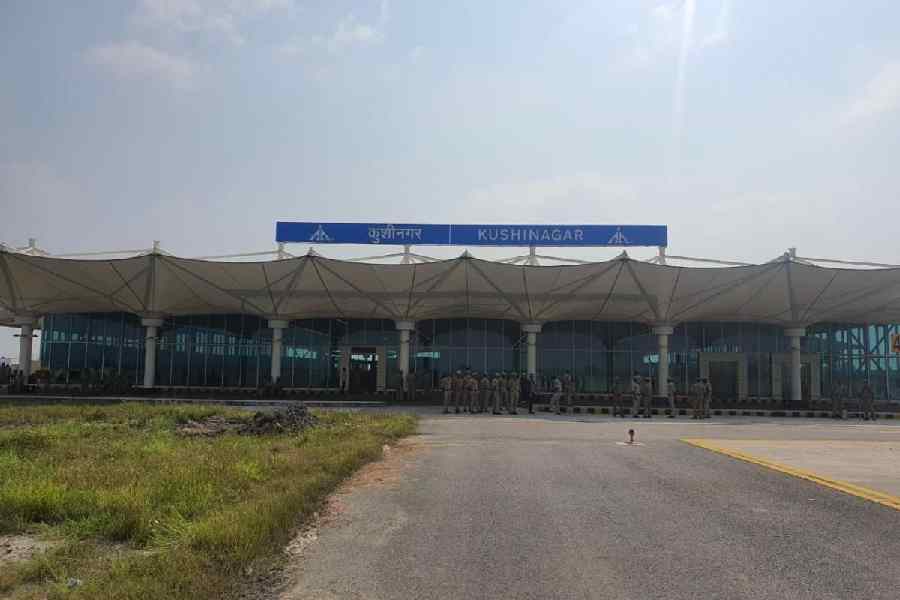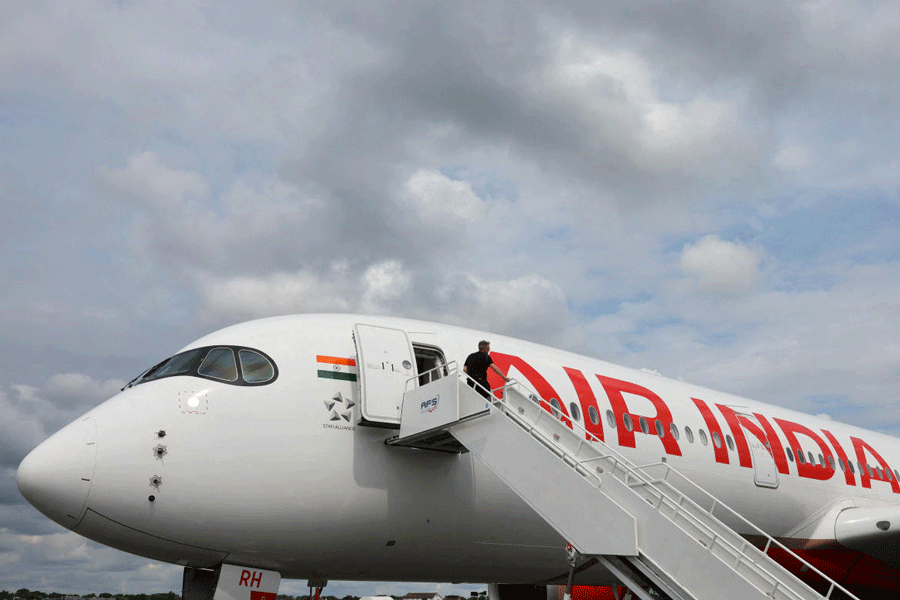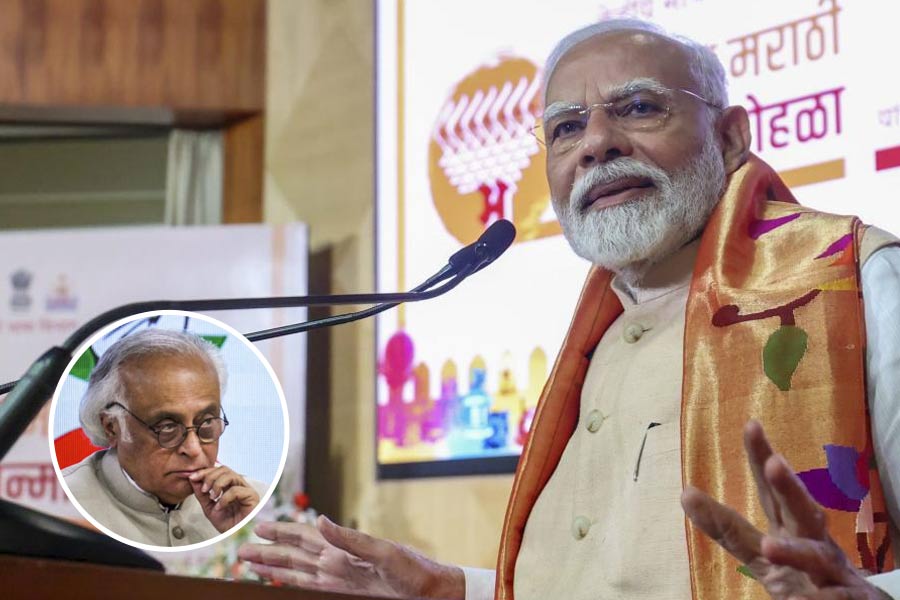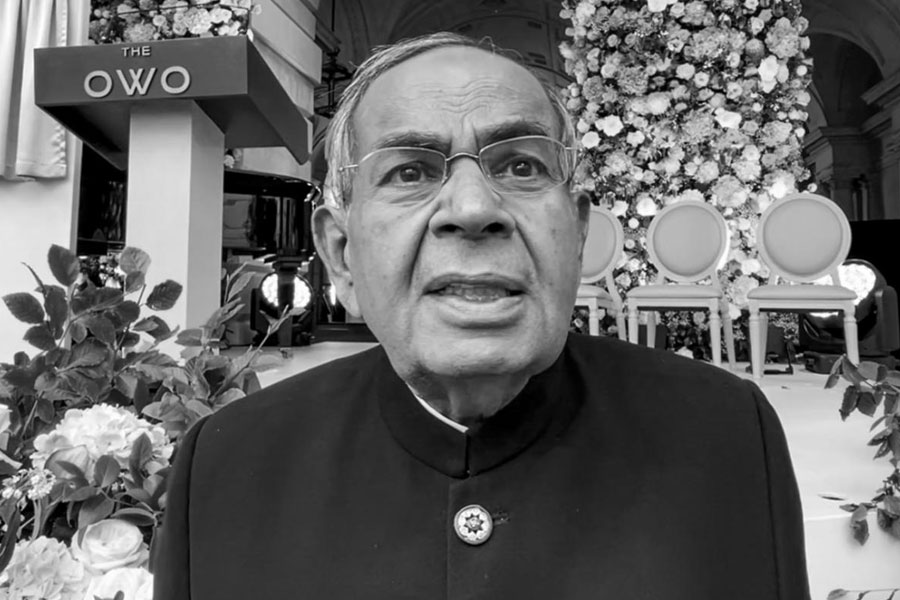 |
| Cam Ranh Bay |
New Delhi, Sept. 16: A captain from the Indian Navy’s eastern fleet who cannot be named was escorted to pay homage to a historical Vietnamese military leader in July when his ship was docked in the port of Nha Trang on a western shore of the South China Sea.
There was little that was theatrical in that event. Except that the Vietnamese folk hero, at whose statue the Indian naval officer paid homage with flowers, is celebrated for having defeated the Chinese in a 13th century war.
Later, as the captain’s ship was leaving Nha Trang for Haiphong in north Vietnam, the INS Airavat was raised on open radio by a caller claiming to be Chinese.
It was interrogated but the Indian amphibious attack ship continued on its voyage.
Now the Indian Navy is casting a longing eye at a Vietnam War-era port near Nha Trang that is to reopen in two years.
Cam Ranh Bay is a natural deepwater port — reputed to be the finest in South East Asia, complete with repair facilities for warships, submarine pens and civilian and military airports.
 |
It is in Vietnam but the waters lapping it are of the South China Sea that Beijing claims as its captive lake.
India’s foreign minister S.M. Krishna is currently leading a high-level delegation to Hanoi but it is a quieter visit by India’s defence secretary Shashi Kant Sharma that could drive the strategic partnership that New Delhi is seeking to build with countries around China.
The defence secretary-level strategic dialogue, which concluded on Wednesday, and subsequent consultations with Vietnam’s defence minister and service chiefs are expected to firm up a programme for exchange of personnel and training in submarine and anti-submarine warfare.
India is also seeking docking rights for its warships — and facilities to post naval instructors long-term — in Cam Ranh Bay on Vietnam’s south-central coast, and at Nha Trang, 60km north of the bay.
Cam Ranh Bay and Nha Trang are on a busy commercial route that cuts through South China Sea.
The questioning of India’s amphibious attack ship, the INS Airavat, is part of the tension building up between the expanding navies of India and China.
The Airavat, the first Indian warship to have been permitted by the Vietnamese to dock in Nha Trang, was sailing to Haiphong in northern Vietnam when it reported the interrogation.
India’s effort to gain easy and permanent access to these ports are akin to China’s strategy of creating bases at Gwadar, near Karachi in Pakistan’s Makran coast, and at Hambantota, on the southern tip of Sri Lanka.
For India’s strategic establishment, Vietnam, with whom New Delhi has had traditionally strong ties — and which supports India’s bid for a permanent UN Security Council membership — can provide the navy with just the kind of listening and refuelling facilities that Pakistan in Gwadar and Sri Lanka in Hambantota can to the Chinese.
The increase in Indian commercial traffic — to and from Russia, South Korea and Japan (apart from China and Vietnam) — through this route and the investments in oil prospecting in Vietnam has only strengthened the case for an Indian naval presence in the zone. India also expects an increase in oil supplies through this route from Russia’s Pacific coast.
“What I know is that security and defence co-operation are again important facets of co-operation with Vietnam. We have a memorandum of defence co-operation that was concluded in 2009,” Indian foreign ministry spokesperson Vishnu Prakash said yesterday when asked about India’s interest in Nha Trang.
“We have regular high-level exchanges, visits — both mil to mil (military to military), as well as at the political and official levels. Our defence minister was in Vietnam last year in October. Our ships regularly pay port calls in Vietnam and vice versa. We have joint training. We have exchange of information. With any friendly country the kind of security and defence co-operation that we have, we have with Vietnam,” he said.
The increase in India’s interest in Vietnam is fuelled not only by burgeoning trade but also by the rapid pace at which China’s navy is modernising — it recently demonstrated its (as yet unnamed) aircraft carrier and is steadily expanding its submarine fleet.
Cam Ranh Bay lies across the Chinese naval and submarine base at Hainan. Used by the French and the Americans as a landing ground for troops and supplies in their war against Vietnam’s liberators from the 1950s to the 1970s, Cam Ranh Bay was leased to Russia for 25 years in the 1980s. But Russia pulled out after Vietnam increased the lease rent.
Then two years ago, Vietnam had a swap deal with Russia. Russia would rebuild the port and facilities at Cam Ranh Bay for merchant and naval ships, and would also supply six kilo-class submarines.
The Indian Navy has been operating the same class of diesel-electric submarines, also sourced from Russia. The IAF too operates Sukhoi 30 fighter aircraft that Vietnam has again contracted from Russia.
In his talks with Vietnam’s military brass, India’s defence secretary is following up on a commitment made by defence minister A.K. Antony during his visit last year — “to provide training for all three armed forces of Vietnam”.
This would include admitting Vietnamese naval personnel to the Indian Navy’s submarine-training establishment at INS Satavahana in Visakhapatnam and also posting personnel to Cam Ranh Bay, which is to reopen in 2013.
Vietnam’s Prime Minister has announced that it will be open to foreign warships.
For Vietnam, which has a history of hostilities with China, the presence of foreign warships in its ports is a sort of low-premium insurance against Chinese aggression. The move will also boost revenues.










